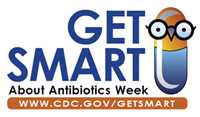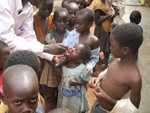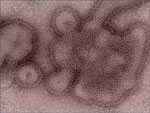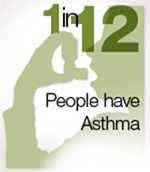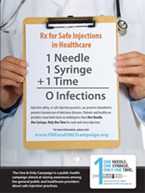December
A New Year, A More Improved You: A New Year of Healthy Possibilities!
December 24, 2012
The New Year has long been a time for reflection on the personal changes we want to make as we look forward to a year of healthy possibilities. Make being healthy your resolution. Find ways to get and stay healthy this year. Tips focus on a healthy you, family, home, community, and workplace.
Influenza Division Weekly Influenza Surveillance Report (Week 50)
December 21, 2012
CDC's influenza activity report, FluView, shows continued increases in flu activity in the United States. According to CDC Director Dr. Thomas Frieden, "Today’s report confirms that the U.S. flu season is off to an early start though it's too early to tell how severe our season might be. However, we know that thousands die and hundreds of thousands of people are hospitalized with flu each year. Vaccination is the single most important step we can take to protect ourselves and our families against infection. It's not too late to get vaccinated.”
Twelve Health and Safety Tips for the Holidays
December 17, 2012
Pay special attention to your health and be safe this holiday season. Give the gift of health and safety to yourself and others by following these holiday tips. You can sing along to The 12 Ways to Health Holiday Song, listen to a holiday health podcast, and send the song to your friends and family in a holiday health-e-card!
Save Energy and Resources This Holiday Season
December 10, 2012
The winter holidays are nearly here! Some of us are ready for the festivities, but many of us are still planning and shopping for decorations and gifts and organizing holiday gatherings. Make “green” holiday choices when you are shopping, traveling, sending cards, decorating, and choosing gifts. When you save energy and resources, you protect the environment and safeguard health both now and for the future.
Significant Increases in Flu Activity
December 3, 2012
Significant increases in flu activity in the United States have occurred in the last two weeks, indicating that an early flu season is upon us. These increases in activity overlap with National Influenza Vaccination Week (NIVW) being observed December 2-8, 2012. According to Dr. Melinda Wharton, Acting Director of CDC’s National Center for Immunization and Respiratory Diseases, “Increasing flu activity should be a wake-up call. For anyone who has put off vaccination: It’s time to get your flu vaccine now.”
Hand washing: Clean Hands Save lives
December 3, 2012
National Hand Washing Awareness Week is December 2nd –December 8th. Keeping hands clean through improved hand hygiene is one of the most important steps we can take to avoid getting sick and spreading germs to others. Many diseases and conditions are spread by not washing hands with soap and clean, running water. If clean, running water is not accessible, as is common in many parts of the world, use soap and available water. If soap and water are unavailable, use an alcohol-based hand sanitizer that contains at least 60% alcohol to clean hands.
November
National Alzheimer's Disease Awareness Month
November 19, 2012
Alzheimer's disease, the most common form of dementia among older adults, affects parts of the brain that control thinking, remembering and making decisions. It can seriously impair a person's ability to complete daily activities. Learn more about Alzheimer's disease and factors that may increase or lessen your risk for getting the disease. It is estimated that as many as 5 million Americans have Alzheimer's disease. Younger people may get Alzheimer's disease, but it is much less common than in older adults. The disease usually begins after age 60 and risk goes up with age. About 5 percent of men and women ages 65 to 74 have Alzheimer's disease. It is estimated that nearly half of those age 85 and older may have the disease.
Get Smart About Antibiotics Week
November 12, 2012
During November 12-18, 2012, the annual Get Smart About Antibiotics Week will be observed. Overuse of antibiotics promotes antibiotic resistance and compromises their effectiveness. Infections caused by resistant bacteria have become more common, and many bacteria have become resistant to multiple antibiotics. As in past years, the observance will coordinate work of CDC’s Get Smart: Know When Antibiotics Work and Get Smart for Healthcare programs, state-based initiatives, non-profit partners, and for-profit partners during a one week observance of antibiotic resistance and the importance of appropriate antibiotic use. Messages and resources for improving antibiotic use are available.
Lung Cancer Awareness Month
November 5, 2012
Each year, about 200,000 people in the United States are told they have lung cancer and more than 150,000 people die from the disease. More Americans die from lung cancer than any other type of cancer. There are several things you can do to reduce your risk of developing lung cancer:
- Don’t smoke. If you do smoke, quit now.
- Avoid secondhand smoke.
- Have your home tested for radon and take corrective actions if high levels are found.
- Be aware of your exposure to radiation from medical imaging. Ask your doctor about the need for medical tests that involve images of the chest.
- Follow health and safety guidelines in the workplace when working with toxic materials.
October
Keep the Family Healthy This Fall
October 29, 2012
The fall season is an excellent opportunity to continue healthy habits and to explore new ways to be safe and healthy. For example, children (and the rest of the family) should wash their hands for at least 20 seconds to avoid could and flu. The single best way to protect against the flu is to get vaccinated each year. Learn more about additional steps to take to keep healthy this fall.
World Polio Day
October 23, 2012
World Polio Day, established by Rotary International over a decade ago, is held on October 24th in celebration of the birth of Dr. Jonas Salk, the man who led the first team to develop a vaccine against polio. World Polio Day is an opportunity for the global polio eradication community to renew its promise of a polio-free world to future generations.
1 is 2 Many: Intimate Partner Violence a Public Health Problem
October 22, 2012
On average, 24 people per minute are victims of rape, physical violence, or stalking by an intimate partner in the United States, based on the National Intimate Partner and Sexual Violence Survey conducted in 2010. Over the course of a year, that equals more than 12 million women and men. Those numbers only tell part of the story—more than 1 million women are raped in a year and over 6 million women and men are victims of stalking in a year. These findings emphasize that sexual violence, stalking, and intimate partner violence are important and widespread public health problems in the United States.
Spotlight on the Division of High-Consequence Pathogens and Pathology (DHCPP)
October 15, 2012
The Division of High Consequence Pathogens and Pathology (DHCPP) maximizes public health and safety nationally and internationally through the diagnosis, prevention, and control of disease, disability, and death caused by suspected and known viral, bacterial, prion, and related infections. In carrying out its mission, DHCPP, conducts surveillance, investigations, and studies of viral and bacterial diseases, including bioterrorism agents, as well as of transmissible spongiform encephalopathies, or prion diseases, and severe diseases of unknown, but suspected infectious, etiology to define their etiology and epidemiology, and to develop effective methods for diagnosis, treatment, control, and prevention.
National Breast Cancer Awareness Month
October 8, 2012
October is National Breast Cancer Awareness Month. In the United States in 2008, 210,203 women were diagnosed with breast cancer, and 40,589 women died from the disease. Breast cancer is the second most common cancer among American women. CDC supports breast cancer surveillance and research, and provides free or low-cost mammograms to underserved women. The best way to find breast cancer early is with a mammogram. If you are a woman age 50 years or older, be sure to have a screening mammogram every two years.
Minding the Mental Health of Humanitarian Aid Workers
October 2, 2012
In a recent article in PLOS ONE, CDC and collaborators conducted a longitudinal study among over 200 international humanitarian workers to measure levels of anxiety, depression and burnout after deployment, and assess risk and protective factors. The article makes several recommendations for organizations that deploy staff to emergency settings. First, organizations should screen candidates for a history of mental illness, alert them to the risks associated with humanitarian work, and provide psychological support during and after deployment. Second, provide a supportive work environment, manageable workload, and recognition. Organizations should also encourage and facilitate social support and peer networks. Learn more about this important research.
September
World Rabies Day
September 24, 2012
September 28 is World Rabies Day, a global health observance that seeks to raise awareness about rabies and enhance prevention and control efforts. World Rabies Day is an excellent time to take steps that can help prevent and control rabies, such as vaccinating pets including dogs and cats and providing education on how to avoid the animals that typically transmit rabies: raccoons, bats, skunks, and foxes.
Staying Healthy with Sickle Cell
September 17, 2012
Sickle Cell Disease (SCD) affects an estimated 80,000 to 100,000 Americans. Due to the serious health problems associated with SCD there is a need to know more about the disease. People with SCD can live full lives and enjoy most of the activities that other people do. If you have SCD, it’s important to learn how to stay as health as possible.
Ovarian Cancer Awareness Month
September 10, 2012
Ovarian cancer causes more deaths than any other cancer of the female reproductive system. But when ovarian cancer is found in its early stages, treatment is most effective. Ovarian cancer often causes signs and symptoms, so it is important to pay attention to your body and know what is normal for you. Symptoms may be caused by something other than cancer, but the only way to know is to see your doctor, nurse, or other health care professional.
Children's Environmental Health
September 6, 2012
As parents and kids get ready to head back to school, it’s a great time to update your child’s vaccine records. It’s also a good idea to be aware of your child’s environment and how it might be affecting their health. The environment affects children differently than adults. Because their bodies are still growing, children are at greater risk if they are exposed to environmental contaminants. Contaminants are anything that can cause something to become unclean, polluted, or not pure. They can be found anywhere and some are unsafe. Check out the new Children’s Environmental Health module on CDC’s Environmental Public Health Tracking Network to learn more about information related to children’s health and the environment. You will find information on asthma, childhood cancers, lead poisoning, developmental disabilities and more.
DID YOU KNOW? High Blood Pressure
September 4, 2012
About 67 million adults have high blood pressure. More than half (36 million) have uncontrolled high blood pressure. High blood pressure is a major risk factor for heart disease and stroke, the first and fourth leading causes of death in the United States, leading to nearly 1,000 deaths a day. The majority of people with high blood pressure are being treated with medicine, yet their condition is still not under control. Millions more are either aware they have high blood pressure but aren’t getting any treatment with medicine or don’t know they have high blood pressure. The September issue of CDC’s Vital Signs highlights the importance of awareness and treatment for adults with uncontrolled hypertension. Adults with high blood pressure can gain control by taking their blood pressure medicine
August
CDC Disease Sleuths Discover New Human Pathogen
August 30, 2012
A report on the discovery of a new human pathogen, named “Heartland virus”, was published this week in the New England Journal of Medicine. In the paper, authors from the Centers for Disease Control and Prevention and the Heartland Regional Medical Center describe the two known cases of illness caused by this novel virus, which occurred in 2009. Both patients had tick bites in the days leading up to their illness, and were hospitalized with multiple symptoms, including fever, headache, fatigue and diarrhea. Both patients recovered from their illness.
Much is yet to be learned about Heartland virus. CDC is working with the Missouri Department of Health and Senior Services, local health departments, and several healthcare facilities in Missouri to determine symptoms and potential severity of the disease, the geographic extent of the disease, how people are infected and ways to prevent infections.
New Pediatrics study on influenza-related deaths in children
August 29, 2012
The American Academy of Pediatrics’ journal Pediatrics has released a CDC study describing influenza-related deaths in children during the 2009 H1N1 influenza pandemic. The study focused on deaths in children with neurologic disorders because they represented a large percentage of the pediatric deaths. Of 343 pediatric deaths reported to CDC that were associated with the 2009 H1N1 pandemic, 336 had information on the children’s underlying medical conditions. Of these, 68 percent of pediatric deaths reported to CDC were in children who had at least one underlying medical condition that put them at high risk for influenza-related complications. An estimated 64 percent of children with a high risk condition had an underlying neurologic disorder. Neurologic disorders were the most frequently reported underlying medical conditions in this study.
Spotlight on the National Center for Health Statistics (NCHS)
August 27, 2012
The National Center for Health Statistics' website is a rich source of information about America's health. As the Nation's principal health statistics agency, NCHS compiles information to guide actions and policies to improve the health of the nation. NCHS is a unique public resource for health information and an important element of public health and health policy.
2012 National Cancer Conference
August 20, 2012
CDC will host the 2012 National Cancer Conference in collaboration with other leaders in the field of public health. The theme is "Uniting Systems, Policy, and Practice in Cancer Prevention and Control." The purpose of the conference is to bring together representatives from local, state, territorial, federal, academic, national, and community-based cancer prevention and control programs to translate research to practice and improve public health.
National Immunization Awareness Month (NIAM)
August 13, 2012
August is typically recognized as National Immunization Awareness Month (NIAM). This awareness month highlights the need for improving national immunization coverage levels and encourages all people to protect their health by being immunized against infectious diseases. While CDC does not sponsor this month, CDC does support and encourage the efforts of state and local health departments and other immunization partners to celebrate NIAM and use this month to promote back to school immunizations, remind college students to catch up immunizations before they move into dormitories, and remind everyone that the influenza season is only a few months away. It’s a great reminder to our nation that people of all ages require timely immunization to protect their health.
CDC Reports 153 Cases of H3N2v Virus Infection;
Continues to Recommend Precautions When Interacting with Pigs
Note: Virus has not been shown to be transmissible to people through consumption of pork
August 10, 2012
Today, CDC reported a total of 153 cases of human infection with influenza A (H3N2) variant virus (or “H3N2v virus”) associated with outbreaks detected beginning in July. The H3N2v viruses are the same as previous H3N2v viruses identified in people in 2011 and April 2012 and H3N2 viruses found in U.S. swine in 2011 and 2012. Influenza viruses can spread from contact between infected pigs and people and from infected people and pigs. To reduce this risk, preventive measures such as practicing frequent hand hygiene and respiratory etiquette are recommended.
H3N2v is not a food-borne illness. Influenza viruses have not been shown to be transmissible to people through eating pork (pig meat), For more information about the proper handling and preparation of pork, visit the USDA website fact sheet Fresh Pork from Farm to Table.
According to a report published in the Morbidity and Mortality Weekly Report (MMWR), more than 90 percent of H3N2v cases were in children younger than 18, with the median age being 7 years. All of the cases reported exposure to pigs, the majority at agricultural fairs where pigs were present. Two confirmed hospitalizations have been reported and both patients have recovered and been discharged. No deaths have been reported. Symptoms so far have been mostly mild.
Late summer is typically fair season across the United States, and fairs are a setting that can provide many opportunities for exposures to occur between pigs and people. CDC continues to monitor the situation closely and recommends preventive actions to make people’s fair experience a safe and healthy one.
Please visit the CDC web site at http://www.cdc.gov/flu/swineflu/h3n2v-fairs-factsheet.htm for more information.
CDC Reports Cases 18-29 of H3N2v Virus Infection; Continues to Recommend Interim Precautions When Interacting with Pigs
August 3, 2012
Today, CDC reported an additional 12 cases of human infection with influenza A (H3N2) variant virus (or “H3N2v virus”). These H3N2v viruses that are the same as previous H3N2v viruses identified in people and H3N2 viruses that have been found in U.S. swine. These cases occurred in three U.S. states; all occurred in people who had direct or indirect contact with swine and all but one case was associated with attendance at agricultural fairs where swine were present. Late summer is typically the fair season across the United States, and fairs are a setting that can provide many opportunities for exposures to occur between pigs and people. CDC continues to monitor the situation closely and recommends preventive actions to make people’s fair experience a safe and healthy one.
July
CDC Reports Cases 14-17 of H3N2v Infection; Shares Advice for Safe Fair-Going
July 26, 2012
CDC today reported the first fair-associated outbreak of influenza A (H3N2) variant virus this year. Genetic testing at CDC has confirmed that viruses found in humans and those found in swine in this situation are nearly identical. Fairs are an important event for exhibitors and their swine, and a great experience for fairgoers, but the detection of H3N2v at a few fairs last year, and the re-emergence at one fair so far this year is an issue CDC is watching. "As fair season begins across the United States, CDC would like to let people know about some preventive actions they can take to make their fair experience a safe and healthy one," says CDC Influenza Division Deputy Director Dan Jernigan.
World Hepatitis Day
July 23, 2012
Hepatitis B and Hepatitis C can become chronic, life-long infections that can lead to liver cancer. Millions of Americans live with chronic viral hepatitis, and many do not know they are infected. Although Saturday, July 28th is World Hepatitis Day, viral hepatitis needs more attention throughout the year. Data from the Institute of Medicine (IOM) shows the American public and health care professionals lack knowledge and awareness about viral hepatitis. The term ‘hepatitis’ means inflammation of the liver, and it refers to a group of diseases, each caused by a unique virus.
Preventing Chronic Disease journal awarded first impact factor
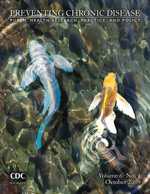
July 19, 2012
Preventing Chronic Disease(PCD) recently received its first Thomson Reuters impact factor. Thomson Reuters is the world's leading source of intelligent information for businesses and professionals for a number of journal categories, including finance and business, tax and accounting, legal, and science. Thomson Reuters Journal Citation Reports measures the frequency with which the average article in a journal has been cited in a particular year or period. With an impact factor of 1.819, PCD is one of the highest debuting public health journals in 2012. Preventing Chronic Disease (PCD) is a peer-reviewed electronic journal published by the Centers for Disease Control and Prevention, National Center for Chronic Disease Prevention and Health Promotion. The journal has a circulation of more than 30,000 and content is available via our webpage, RSS feeds, and the CDC iPad app.
Protect your baby: Breastfeeding
July 16, 2012
Breastfeeding helps protect children from obesity. In the US, most mothers want – and try – to breastfeed. Unfortunately, even moms who want to breastfeed have a hard time without hospital support.CDC data shows 96% of hospitals lack maternity care policies and practices that fully support moms to be able to breastfeed. Hospitals can do more to make sure every mother can start and continue breastfeeding. The Baby-Friendly Hospital Initiative recommends 10 Steps to Successful Breastfeeding. Find out how better maternity care practices can help mothers start and continue breastfeeding.
Fire Safety in July
July 9, 2012
The risk of injury and death from home fires is real. Consider that: In 2011, fire departments across the country responded to 384,000 home fires. These fires claimed the lives of 2,640 people and injured another 13,350. Approximately 4 out of 10 home fire deaths occur in homes without smoke alarms. The main reason smoke alarms fail to operate during home fires is missing or disconnected batteries. Your home should be a safe and comfortable place—and you can help keep it fire-safe by following simple steps.
Summertime Safety
July 2, 2012
It's summertime, and that means it's time to go outside and enjoy the weather. The return of warmer temperatures brings thoughts of freedom, relaxation, exploration, and being closer to nature. Whether you're relaxing in the backyard, turning up your garden, enjoying the pool, or exploring the great outdoors, here are some ways to help keep you and your family healthy this spring and summer.
June
Learn more about heat-related illness and how to stay cool and well in hot weather
June 29, 2012
Getting too hot can make you sick. You can become ill from the heat if your body can't compensate for it and properly cool you off. Heat exposure can even kill you: it caused 3,442 deaths in the United States from 1999 to 2003, and average 688 deaths a year. These are the main things affecting your body's ability to cool itself during extremely hot weather: high humidity and personal factors.
Handing your teen the car keys-Are you confident or concerned?
June 25, 2012
Motor vehicle crashes are the leading cause of death for U.S. teens, accounting for more than one in three deaths in this age group. In 2009, eight teens ages 16 to 19 died every day from motor vehicle injuries. Per mile driven, teen drivers ages 16 to 19 are four times more likely than older drivers to crash.
Traveling to the Olympics this summer? Be careful what you bring back!
June 18, 2012
The 2012 Summer Olympics is around the corner and people around the world are preparing. Athletes are putting in their final weeks of training, London officials are getting the city ready for visitors, spectators and others are making their travel plans. In CDC’s case, we’re trying to make sure everyone’s healthy for the big event. One area of concern is measles, particularly; unvaccinated travelers contracting measles while they’re abroad and bringing it back to the States. Last year, there were 222 cases of measles reported, most of which were due to overseas travel. Let the souvenirs of your time in London be the only things you bring back after the games.
Improved BRFSS Data Collection
June 13, 2012
Refinements to the CDC Behavioral Risk Factor Surveillance System (BRFSS) to include data received from cell phone users facilitates the inclusion of a broader demographic and ultimately provides a better reflection of the nation’s health status.
The BRFSS telephone survey has been traditionally done with people using land lines. However, in recent years, an increasing number of people are only using cell and other mobile phone devices. CDC recognized the need to include cell phone users in our survey in order to obtain data that better represents the diverse populations in our nation. Because we have expanded and improved the way we gather and process information, new data cannot be accurately compared to previous findings. However, as we move forward, the survey results will better reflect the health status of the people of the United States.
Protect yourself from Skin Cancer-Choose your cover!
June 11, 2012
Skin cancer is the most common form of cancer in the United States. Summer is around the corner, be smart and don’t let skin cancer become a part of your memories. Skin cancer is curable. About 65–90 percent of the most common skin cancer (melanomas) is caused by exposure to visible light. Have fun in the sun this summer, but protect yourself, choose your cover!
Statement regarding Office of the Inspector General Vaccines for Children report
June 7, 2012
On June 5, 2012 the U.S. Department of Health and Human Service Office of the Inspector General (OIG) released a report on "Vaccines for Children (VFC) Program: Vulnerabilities in Vaccine Management.". CDC's VFC program provides free vaccines to eligible children through a national network that includes all states and U.S. territories and is composed of more than 44,000 participating provider sites. This program plays a significant role in improving access to vaccination for millions of children.
May
2011-2012 Flu Season Draws to a Close
May 25, 2012
Today the Centers for Disease Control and Prevention issued the final full influenza surveillance report for the 2011-2012 season. The report – titled “FluView” – shows that influenza activity in the United States is minimal across most of the country, wrapping up a season that began late and was mild compared to most previous seasons for which surveillance data is available. In fact, the season set a new record for the lowest and shortest peak for influenza-like-illness since this type of record-keeping began.
Arthritis Awareness Month
May 21, 2012
Arthritis affects 50 million Americans and is expected to increase significantly as the population ages. Each year in May, Arthritis Awareness Month focuses national attention on the burden of arthritis and the tools and resources for better managing arthritis symptoms. Take action—don't let arthritis limit you. Being overweight is one of the strongest risk factors for osteoarthritis, the most common form of arthritis. Routine and physical activity is recommended for people with arthritis. There are many things that you can do to live well with arthritis. Maintaining a healthy weight and being physically active are just two of them.
National Asthma and Allergy Awareness Month
May 14, 2012
Asthma is one of the most common lifelong chronic diseases. There are about 25 million Americans living with asthma. The disease affects the lungs, causing repeated episodes of wheezing, breathlessness, chest tightness, and coughing. Although asthma cannot be cured, it is possible to manage asthma successfully to reduce and prevent asthma attacks, also called episodes. Successful asthma management includes knowing the warning signs of an attack, avoiding things that may trigger an attack, and following the advice of your healthcare provider. Using what you know about managing your asthma can give you control over this chronic disease. When you control your asthma, you will breathe better, be as active as you would like, sleep well, stay out of the hospital, and be free from coughing and wheezing.
Patient Safety
May 7, 2012
You go to the hospital to get well, right? Of course, but did you know that patients can get infections in the hospital while they are being treated for something else? There are many things you can do to be a safe patient and avoid Healthcare Associated infections (HAI’s). HAIs are infections patients get while being treated for something else in a healthcare environment. HAIs are caused by a wide variety of common or unusual bacteria, fungi, and viruses. These infections can have devastating emotional, financial, and medical effects. Worst of all, they can be deadly.
Reporting on Suicide: Recommendations for the Media
May 3, 2012
The media play a powerful role in educating multiple audiences about suicide prevention by informing readers and viewers about the likely causes of suicide, warning signs, trends in suicide rates, and recent advances in prevention. These recommendations will help guide the media in educating readers and viewers about the steps that can be taken to prevent suicide.
April
Stop the Violence!
April 30, 2012
Sexual violence (SV) is any sexual act that is perpetrated against someone's will. SV encompasses a range of offenses, including a completed nonconsensual sex act (i.e., rape), an attempted nonconsensual sex act, abusive sexual contact (i.e., unwanted touching), and non-contact sexual abuse (e.g., threatened sexual violence, exhibitionism, verbal sexual harassment). All types involve victims who do not consent, or who are unable to consent or refuse to allow the act. Risk factors are associated with a greater likelihood of sexual violence (SV) perpetration. They are contributing factors and may or may not be direct causes. Not everyone who is identified as "at risk" becomes a perpetrator of violence. A combination of individual, relational, community and societal factors contribute to the risk of becoming a perpetrator of SV. Understanding these multilevel factors can help identify various opportunities for prevention.
CDC Response to Sick Passenger on Delta Plane in Chicago
April 26, 2012
CDC received a report earlier this evening of a passenger on a plane at Midway Airport who had a rash. Since the passenger had been in Africa, a family member had reported concerns that the rash might be monkeypox. The passenger was evaluated by Chicago Emergency Medical Services. Medical staff at CDC and the Chicago Department of Public Health (CDPH) reviewed the case and, based on the patient's symptoms and photographs of the rash, it does not appear that the signs and symptoms are consistent with a monkeypox infection. The ill passenger was advised to seek medical care and the rest of the passengers were released from the plane. CDC and CDPH believe there is very little risk to other passengers. However, out of an abundance of caution, the airline will be collecting contact information for other passengers should CDC need to contact them in the future.
Laos Launches Seasonal Flu Vaccination Program During World Immunization Week
Vaccine Program Results from 6-year Collaboration between CDC and Lao Ministry of Health
April 26, 2012
As the world mark's National Immunization Week, the Lao People’s Democratic Republic (Lao PDR, or Laos), is launching a seasonal influenza vaccination program to protect adults at high risk of serious flu-related complications. The program is the product of a 6-year collaboration between the Centers for Disease Control and Prevention (CDC), the World Health Organization (WHO) and the Lao Ministry of Health to develop the country’s influenza public heath capacities. CDC is helping 50 countries around the world to build influenza preparedness and prevention capacity, including implementing vaccination programs. This vaccine for the program in Laos is being provided by Walgreens this year.
Malaria threatens security of millions
April 25, 2012
Malaria, a disease spread by mosquito bites, can lead to impoverishment, disability, and death. Beyond the loss of human potential, malaria’s direct costs total more than $12 billion each year and cause substantial economic losses for entire nations. Encouragingly, inexpensive yet simple interventions can dramatically reduce malaria’s impact.
From global efforts to grass-roots mobilization, resources committed to fight malaria have increased greatly in the past decade. Hundreds of millions of life-saving insecticide-treated bed nets and effective antimalarial medicines are now available to people who need them, especially pregnant women and children under 5 years old, who are most vulnerable to malaria.
National Infant Immunization Week
April 23, 2012
Vaccines give parents the power to protect their children against 14 serious diseases before they turn 2 years old. During National Infant Immunization Week (NIIW), communities across the country and around the world will highlight the importance of protecting infants from vaccine-preventable diseases and celebrate the achievements of immunization programs and their partners. Since 1994, NIIW has served as a call to action for parents, caregivers, and healthcare providers to ensure that infants are fully immunized. NIIW 2012 will be April 21-28.
Progress Towards Polio Eradication
April 16, 2012
On December 2, 2011, CDC Director Thomas R. Frieden, MD, MPH, activated CDC’s Emergency Operations Center to strengthen the agency’s partnership engagement through the Global Polio Eradication Initiative (GPEI), which is committed to completing the eradication of polio. On December 14, Dr. Frieden enlisted the support of the entire CDC community to become active participants in an intensified strategy to eradicate polio worldwide. In the final push toward global polio eradication, CDC will continue its close collaboration with our partners at WHO, UNICEF, Rotary, and the Gates Foundation to ensure a coordinated global and country-level response. CDC’s partnership in this important eradication effort continues the fight to rid the world of polio that began with CDC’s polio vaccination and disease surveillance efforts in the agency’s early years and sustains the ideal of a world forever free from this deadly and crippling disease.
Newborn Screening Program
April 9, 2012
Soon after birth, all babies born in the United States are checked for certain medical conditions. This is called newborn screening. All babies are screened, even if they look healthy, because some medical conditions cannot be seen by just looking at the baby.
CDC Recommendations for Biochemical Genetic Testing and Newborn Screening for Inherited Metabolic Disorders
April 5, 2012
New recommendations to advance the quality of biochemical genetic testing and newborn screenings are published online today in CDC’s MMWR Recommendations and Reports. The guidance, entitled “Good Laboratory Practices for Biochemical Genetic Testing and Newborn Screening for Inherited Metabolic Disorders,” addresses considerations for laboratory and healthcare professionals important for achieving optimal health outcomes, reducing morbidity and mortality, and improving the public’s health when newborn screening and biochemical genetic tests are performed. These considerations include factors to consider before introducing new tests; quality management for test method validation, test performance, appropriate test result reporting and interpretation; and qualifications required of laboratory personnel who perform these tests and provide laboratory services.
National Minority Health Month
April 2, 2012
The United States has become increasingly diverse in the last century. According to the 2010 U.S. Census, approximately 36 percent of the population belongs to a racial or ethnic minority group. Though health indicators such as life expectancy and infant mortality have improved for most Americans, some minorities experience a disproportionate burden of preventable disease, death, and disability compared with non-minorities. The future health of the nation will be determined to a large extent by how effectively we work with communities to eliminate health disparities among those populations experiencing a disproportionate burden of disease, disability, and death. Persistent health disparities in our country are unacceptable and correctable. Please contact Eva De Vallescar, Health Communications Specialist for information on planned events (fts8@cdc.gov), and 770-488-8277.
March
Preventing Colorectal Cancer
March 26, 2012
Colorectal cancer, also called colon cancer, is cancer that occurs in the colon or rectum. Colorectal cancer affects men and women of all racial and ethnic groups, and is most often found in people aged 50 years or older. In the United States, it is the third most common cancer for men and women. Of cancers that affect both men and women, colorectal cancer is the second leading cancer killer in the United States, but it doesn't have to be.
Healthy Weight - it's not a diet, it's a lifestyle!
March 19, 2012
When it comes to weight loss, there's no lack of fad diets promising fast results. But such diets limit your nutritional intake, can be unhealthy, and tend to fail in the long run. The key to achieving and maintaining a healthy weight isn't about short-term dietary changes. It's about a lifestyle that includes healthy eating, regular physical activity, and balancing the number of calories you consume with the number of calories your body uses. Staying in control of your weight contributes to good health now and as you age.
Measles: Make Sure Your Child is Fully Immunized
March 12, 2012
As of March 2nd, 27 people in six states have been confirmed to have measles in 2012. Most of these people (21) were not vaccinated or had unknown vaccination status. Five U.S. residents and two foreign travelers got infected with measles in Ethiopia, France, Pakistan, or Uganda and brought it to the U.S. Measles outbreaks (3 or more cases) have occurred in Indiana and Kansas. Measles vaccine is highly effective at preventing measles. People should be up-to-date on vaccinations, including before international travel. High vaccine coverage, early detection, and rapid public health response prevent this highly infectious disease from spreading.
National Sleep Awareness Week
March 5, 2012
While we often consider sleep to be a “passive” activity, sufficient sleep is increasingly being recognized as an essential aspect of health promotion and chronic disease prevention in the public health community. Insufficient sleep is associated with a number of chronic diseases and conditions—such as diabetes, cardiovascular disease, obesity, and depression—which threaten our nation’s health. Notably, insufficient sleep is associated with the onset of these diseases and also poses important implications for their management and outcome. Fundamental to the success of all of these efforts is the recognition that sufficient sleep is not a luxury—it is a necessity—and should be thought of as a “vital sign” of good health.
February
Bat Flu
February 29, 2012
A new and dramatically different influenza A virus has been discovered in fruit bats. The findings by scientists from the Centers for Disease Control and Prevention working with the Universidad del Valle of Guatemala are described in an article published in the Proceedings of the National Academy of Sciences (PNAS) journal March issue.
CDC’s Center for Global Health
February 21, 2012
The Center for Global Health leads the execution of CDC’s global health approach, working in partnership to assist Ministries of Health to plan, manage effectively, and evaluate health programs; achieve U.S. Government program and international organization goals to improve health; generate and apply new knowledge to achieve health goals; and strengthen health systems and their impact. At the heart of CDC Global Health Programs are highly capable and committed global health staff. They are supported by the expertise and efforts of approximately 1,400 locally employed staff, contract staff, fellows and hundreds of headquarters staff who travel overseas each year to provide temporary technical assistance. CDC remains committed to ensuring that every dollar spent achieves maximum public health impact.
Overdose deaths from Prescription painkillers
February 15, 2012
Overdose deaths from prescription painkillers—a class of drugs that includes hydrocodone, methadone, oxycodone, and oxymorphone—have skyrocketed in the past decade. Every year, nearly 15,000 people die from overdoses involving these drugs—more than those who die from heroin and cocaine combined.
Prescription painkillers are widely misused and abused. One in 20 people in the United States, ages 12 and older, used prescription painkillers nonmedically (without a prescription or just for the "high" they cause) in 2010.
February is American Heart Month!
February 13, 2012
Heart disease is the leading cause of death for both women and men in the United States, and women account for nearly 50% of heart disease deaths. The most common heart disease in the United States is coronary heart disease, which often appears as a heart attack. Some heart attacks are sudden and intense; however, most heart attacks start slowly, with mild pain or discomfort. The chance of developing coronary heart disease can be reduced by taking steps to prevent and control factors that put people at greater risk.
CDC Says U.S. Seeing Latest Flu Season in Nearly Three Decades
February 10, 2012
According to the CDC influenza surveillance report “FluView,” flu activity in the United States increased for the week ending February 4, 2012. The percentage of respiratory specimens testing positive for influenza nationally rose to 10.5 percent from 7.6 percent the prior week. This is the first time this season that the percent of respiratory specimens testing positive for influenza has surpassed 10 percent, which is generally a marker to indicate that flu season is beginning.
CDC Recommendations for Influenza Antiviral Medications Remain Unchanged
February 7, 2012
A recent review of randomized clinical trial data for the influenza neuraminidase inhibitor antiviral medications published by the Cochrane Collaboration, and two related commentaries [“Rethinking credible evidence synthesis” and “Questions Remain over safety and effectiveness of oseltamivir”] published in the British Medical Journal, raised questions about the value of antiviral medications for the prevention and treatment of influenza. After careful consideration of all available evidence, CDC guidance on the use of antiviral medications remains unchanged. The Centers for Disease Control and Prevention (CDC) continues to recommend the use of the neuraminidase inhibitor antiviral drugs (oral oseltamivir and inhaled zanamivir) as an important adjunct in the prevention and treatment of influenza.
The One & Only Campaign
February 6, 2012
The One & Only Campaign is a public health campaign, led by the CDC and the Safe Injection Practices Coalition, to raise awareness among patients and healthcare providers about safe injection practices. Since 1999, more than 125,000 patients in the United States have been notified of potential exposure to hepatitis B virus, hepatitis C virus, and HIV due to unsafe injection practices. The goal of the One & Only Campaign is to ensure that every injection administered to patients is safe. The Campaign aims to empower patients to ask questions and re-educate healthcare providers regarding safe injection practices.
January
What does Folic Acid do for you? (Folic Acid Awareness Month)
January 30, 2012
Every year, about 300,000 children around the world including the U.S. are born with neural tube defects. If women take 400 mcg of folic acid daily, before and during pregnancy, they can help prevent them. In the U.S. 3,000 pregnancies are affected by neural tube defects (NTDs) every year. NTDs are serious birth defects of the spine and brain; two of the most common NTDs are spina bifida and anencephaly. Taking 400 micrograms (mcg) of folic acid daily can help prevent these major birth defects. Folic acid is a B vitamin that the body uses to make new cells. Everyone needs folic acid. If a woman has enough folic acid in her body before she is pregnant, it can help prevent anencephaly and spina bifida.
»Learn more
Cervical Cancer Health
January 23, 2012
Most cases of cervical cancer are easily preventable with regular screening tests and follow-up. It also is highly curable when found and treated early. Now vaccines are available to protect against the most common cause of cervical cancer. All women are at risk for cervical cancer. It occurs most often in women over age 30. Cervical cancer is highly preventable because screening tests (such as the Pap test) and vaccines to prevent HPV infections are available. When cervical cancer is found early, it is highly treatable and associated with long survival and good quality of life. The main cause of cervical cancer is human papillomavirus (HPV), a common virus that can be passed from one person to another during sex. HPV also causes other cancers, including vaginal, vulvar, anal, penile, and some head and neck cancers. At least half of sexually active people will have HPV at some point in their lives.
»Learn more
National Birth Defect Prevention Month
January 17, 2012
January is National Birth Defects Prevention Month. Birth defects affect approximately one in 33 newborns and are a leading cause of infant mortality in the United States. This year, National Birth Defects Prevention Month focuses on medication use before, during, and after pregnancy. This includes over-the-counter or prescription medications and herbal or dietary products. Approximately two thirds of women use at least one medication during their pregnancy. Because of the possible risks to the unborn baby, pregnant women are not included in the testing of new medications. As a result, little information is available about the safety of taking most medications during pregnancy. Better data will allow women and their health-care providers to make informed decisions about treatment during pregnancy and evaluate the risks and benefits of treatment. CDC's National Birth Defects Prevention Study (NBDPS) helps identify medications that can increase the risk for birth defects. NBDPS data have been used to understand the risks associated with specific antidepressants, antibiotics, and antihypertensives.
»Learn more
CDC Disease Detective Camp
January 9, 2012
The David J. Sencer CDC Museum is pleased to announce the 2012 CDC Disease Detective Camp (DDC) held at CDC’s headquarters in Atlanta, Georgia. DDC is an academic day camp for upcoming high-school juniors and seniors who will be 16 years old by the first day of camp. Dates for the 2012 sessions are June 18-22 and July 16-20, and applications are now available.
»Learn more
It’s a New Year, Let’s Celebrate Healthy!!!
January 3, 2012
Make being healthy your resolution. Find ways to get and stay healthy this year. Tips focus on a healthy you, family, home, community, and workplace. New Year's Day has long been a time for reflection on the personal changes we want to make as we look forward to a happy new year. Health-related goals are popular New Year's resolutions, but you may not know where to begin. Below, you'll find ways to get and keep a Healthy You, Healthy Family, Healthy Home, Healthy Community, and Healthy Workplace. Make health your resolution.
»Learn more
Get email updates
To receive email updates about this site, enter your email address:
Contact Us:
- Centers for Disease Control and Prevention
1600 Clifton Rd
Atlanta, GA 30333 - 800-CDC-INFO
(800-232-4636)
TTY: (888) 232-6348 - Contact CDC-INFO






